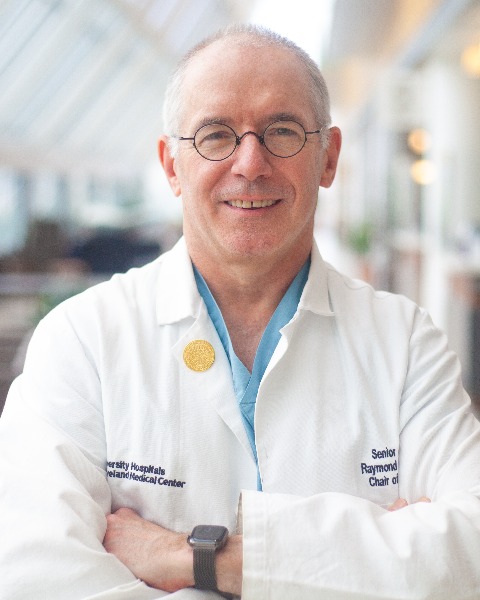Critical Care and Perioperative Management
Category: Scientific Abstract: Oral/Poster
Utilizing Temporary Diaphragm Pacing Electrodes to Decrease Mechanical Ventilation in Cardiac Surgery Patients with Pre-existing Unilateral Diaphragm Dysfunction
R. Onders1, M. Elmo1, N. Carl1, Y. Abu-Omar2, R. C. Arora1, C. Baeza1, Y. Elgudin1, K. Gray3, A. Markowitz4, M. Pelletier5, I. Ribeiro6, P. Ruda Vega7, G. Rushing8, J. Sabik1
1University Hospitals Cleveland Medical Center, Cleveland, Ohio 2University Hospitals Cleveland, Cleveland, Ohio 3University Hospitals Cleveland Medical Center, Shaker Heights, Ohio 4University Hospitals of ClevelandX, Cleveland, Ohio 5University Hospitals, Cleveland, Ohio 6University Hospital - Case Wester University, Rocky River, Ohio 7University Hospitals, Shaker Heights, Ohio 8University Hospitals, Case Western Reserve University, Cleveland, Ohio
1University Hospitals Cleveland Medical Center, Cleveland, Ohio 2University Hospitals Cleveland, Cleveland, Ohio 3University Hospitals Cleveland Medical Center, Shaker Heights, Ohio 4University Hospitals of ClevelandX, Cleveland, Ohio 5University Hospitals, Cleveland, Ohio 6University Hospital - Case Wester University, Rocky River, Ohio 7University Hospitals, Shaker Heights, Ohio 8University Hospitals, Case Western Reserve University, Cleveland, Ohio

Raymond Onders, MD
Chair of Surgical Innovation
University Hospitals Cleveland Medical Center
Cleveland, Ohio, United States
Presenting Author(s)
Disclosure(s):
Raymond Onders, MD: No relevant disclosure to display
Purpose: Diaphragm dysfunction(DD) after cardiac surgery leads to increased difficulty in weaning from mechanical ventilation, increased apneas, increased pneumonias, higher reintubation and tracheostomy rates. Diaphragm pacing (DP) prevents ventilator induced diaphragm dysfunction (VIDD) and overcomes apneas both improving extubation. We report utilization of temporary DP in cardiac patients with pre-existing DD.
Methods: This is a cohort observational report of prospective IRB approved database of non-randomized interventional experiences at a single institution. The subjects in this report were excluded from enrollment in a randomized prospective trial of temporary DP for enhanced recovery after surgery (ERAS) in cardiac surgery patients at risk for prolonged mechanical ventilation because of pre-existing elevated diaphragm on chest x-ray which signals phrenic nerve dysfunction (ClinicalTrials.gov Identifer-NCT04309123 and NCT04899856). These excluded patients were then implanted with an FDA authorized temporary DP system at the time of their cardiac surgery. Prior to sternotomy closure, the pleural space is opened, two electrodes are placed in each hemi- diaphragm and tunneled percutaneously. The electrodes also record diaphragm burst electromyography (dEMG). Once in the intensive care unit DP ensued using a disposable multi-channel stimulator generating a fused diaphragm contraction driving ventilation. Primary report is on the length of mechanical ventilation and respiratory complications.
Results: From 1/1/2020 to 12/31/22, databases included 294 patients implanted with the chronic long term DP or the temporary DP system for all indications. Subgroup analysis was then performed on 7 patients with pre-operative unilateral DD identified radiographically and implanted with the temporary DP system during a high risk for prolonged ventilation cardiac procedure. Average age was 63(range 47-73). Involved diaphragm elevation averaged 6 cm over expected level(range 3.5cm to 8cm)(3 left and 4 right hemi-diaphragm involvement). ASA status was 4 for 6 of 7 patients. Cardiopulmonary bypass time averaged 121 minutes (range 78-182 minutes). Average operative anesthesia time was 5.5 hours (range 3-8). DP stimulation was started on arrival to the ICU. Diaphragm EMG confirmed pre-existing unilateral phrenic and DD. Daily dEMG analysis showed no diaphragm atrophy or VIDD occurring on the non-involved side because of continuous stimulation. DP prevented paradoxical diaphragm movement preventing atelectasis in involved pulmonary field with no pneumonias. DP prevented apneas from associated sleep dysfunction. Average time until extubation was 5.4 hours(range 3-8.5) with no re-intubations. Average days of diaphragm pacing was 7 days(range 2-23). Average days until discharge 11 days(range 5-27). There were no adverse events related to electrode implantation, stimulation or subsequent removal.
Conclusion: Prolonged MV after cardiac surgery leads to significant morbidity, mortality and cost. This report shows that temporary DP electrodes were safely implanted and utilized in high risk surgical cohort with unilateral DD preventing prolonged MV. Multi-centered randomized trials of DP for enhanced recovery after cardiac surgery are ongoing.
Identify the source of the funding for this research project: None
